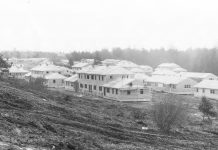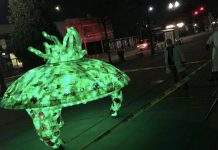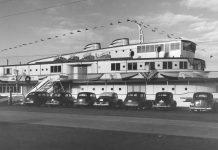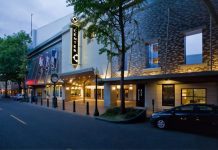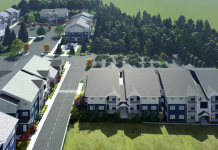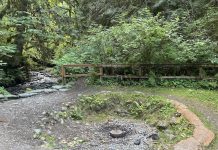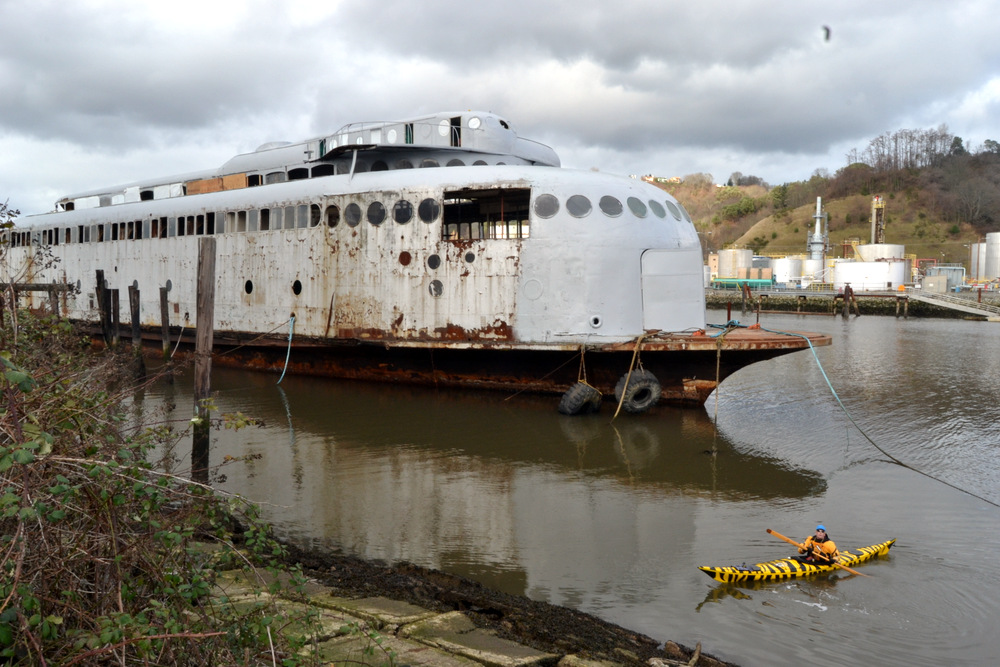Anyone who thought the last story of the fated Kalakala ferry was told when it was dismantled and sold for scrap in 2015 would be wrong.
A full dismantling would have certainly been the end for most bits of history. But not for the “Silver Swan.”
The 88-year-old ferry started life as the Peralta when it worked the San Francisco Bay between 1927 and 1933. A fire, a new name and a new route made it an icon of the Pacific Northwest. It was on postcards. Songs about it played on the radio. Movie stars and politicians had their photographs taken aboard the ferry anytime they found themselves in need of a ferry ride on the Seattle-to-Bremerton route between 1935 and 1967. Her years on Puget Sound bridged the Great Depression to the World’s Fair.
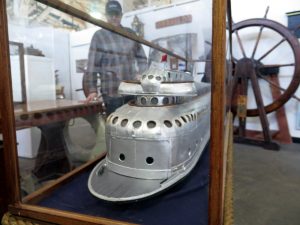
It was the largest and fastest ferry in the fleet as well as most certainly the most beautiful. It served a million passengers a year and offered them an eight-piece orchestra, a lunch counter and velvet-covered seats from which to enjoy the picturesque views of Puget Sound. It also had the distinction of having FCC license number 001, the first commercial radar system ever approved by the Federal Communications Commission. Those glory years ended with the highway system and meant the “Flying Bird” shifted from a life of grandeur to one of manual labor as a fish-processing platform in Alaska for 31 years.
A succession of history and arts enthusiasts then bought her with plans of restoring the aged gal back to her prime. But that was not to be. The Kalakala last saw water when it was towed from its slip on Tacoma’s Hylebos Waterway, to a scrapyard in Tacoma, to a nearby dry dock on the Blair Waterway, where it was dismantled. The Coast Guard deemed it a hazard in fear of sinking in waters used for commercial shipping traffic in 2011, when it began to take on water and was visibly listing. Moorage fees weren’t getting paid, the Kalakala wasn’t being repaired and the Coast Guard wanted it gone. Lawsuits battled their way through the courts. But the end came.
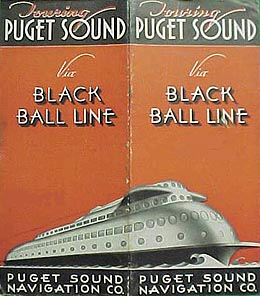
That chapter ended, anyway. Exhibits in the works will tell the next chapters for years to come.
Souvenir hunters bought bits and pieces of her from the scrap yard after the vintage ferry took two weeks to demolish. The auction was expected to last a weekend. The items were gone in a matter of hours. She is now scattered around the world, displayed behind glass and hidden in desk draws of historians.
The Foss Waterway Seaport bought a set of stairs, a cracked piston, an electrical box and a window panel that are now on display. They will serve as the anchor artifacts for a future exhibit once funding is established.
“I would love to put an exhibit together now,” Museum Curator Joseph Govednik said, noting the process will take a few years and include personal stories from Kalakala passengers and crew members. One of those stories will certainly be that of a former crew member who built a scale-model of the vessel in 2014 to pay tribute to his former crew members. “When he was done with it, his wife wouldn’t let him keep it in the garage. So he gave it to us.”
It is now on display at the museum alongside the names of the departed crew mates.
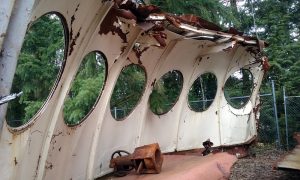
Photo Courtesy: Foss Waterway Seaport Curator Joseph Govednik
Other iconic parts of the Kalakala were saved as well. The City of Kirkland bought 30 pieces of the vessel, including a wheelhouse, doors, valve wheels and a section of ornamental hand railings. Kirkland also bought the top window section above the car entrance doors in the bow of the ship for future use in art around the city, which will honor the vessel that was renovated at the Lake Washington Ship Yard in Kirkland’s Carillon Point after its move to Puget Sound.
“The ideas ranged in magnitude from building a full-scale replica of the ferry, incorporating salvaged pieces, to rebuilding the flybridge and roof or upper portions of the boat on a platform overlooking Lake Washington, to a more impressionistic approach of projecting an image of a worker onto a salvaged part,” the concept report stated. “There also were a number of comments suggesting that the pieces and historical information be incorporated in facilities that the city is building or planning to build such as the refurbished City Hall interior, transit stations and Juanita Park. A smaller group suggested that the salvaged pieces be incorporated in a new art installation. Several reflected on the demise of the boat and thought that creating something new would be far better than trying to resurrect the original boat. One respondent suggested incorporating the pieces into a play structure.”
The West Seattle restaurant Salty’s has artifacts on display with a full display in the works as well.
These efforts mean the Kalakala has many more stories to add to its now legendary life. The iconic Art Deco ferry that was long considered the second most photographed attraction on the planet still has new chapters in the works.





